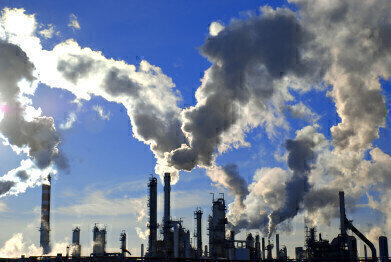Air Monitoring
A Brief Introduction to EN 14181
Apr 28 2014
EN 14181 is a standard of measuring and monitoring emissions to ensure that plants and sources of emissions meet the required criteria demanded by law. Its full title is EN 14181 Stationary source emissions – Quality assurance of automated measuring systems and it was designed to ensure that all emissions meet the regulatory standard. The term ‘automated measuring systems’ (AMS) is a replacement for the term ‘Continuous Emissions Monitoring System (CEMS).
It was first published in June 2004 and has been gradually introduced since that date, most notably where the process of source emissions falls under the Large Combustion Plant Directive (LCPD) or Waste Incineration Directive (WID), which were introduced in 2001 and 2000 respectively.
What does it Actually Mean?
In practice, EN 14181 will affect most of Europe and will bring about a change in the way source emissions are handled. Whereas previously, different countries had different standards and measures by which they handled their emissions, with the introduction of EN 14181, such standards will become uniform and practices the same.
Doing so should increase a higher level of safety and professionalism, and at first will probably demand many countries to step up their level of care and stringency. Most crucially, it will determine and alter the way in which AMS are prepared, operated and kept in good working order.
Specifically, what will it Entail?
As mentioned, most countries across Europe will now have to adhere to the same regulations and doing so will more than likely involve stepping up their levels of professionalism. The key changes that will come into force are as follows:
- More time and care taken in determining the suitability of specific equipment for specific tasks.
- More rigorous preparatory and calibration methods.
- A higher level of discipline and thoroughness when operating, cleaning and maintaining the equipment.
- A higher level of importance will be attached to the monitoring and care of emissions, which will result in a safer, more disciplined and more professional workplace.
- It will require full co-operation and interaction between all parties involved in the emissions process.
For a more detailed look at exactly which tests and procedures will come into play, and how they have fared over the last decade of implementation, please review this article.
How can the Implementation of EN 14181 be best Achieved?
Since the new procedures will affect a wide variety of industries and companies across Europe, understanding the intricacies of the standard is paramount. It is vital that all parties agree on the basic requirements and demands of the standard and work together to achieve its aims. A live webcast, talking about how best to meet the procedural requirements of EN 14181 (and its American equivalent) and its application in particular to wet stack technology, can be viewed here.
Though the process of implementation and satisfaction of EN 14181 will be complex and difficult and will require a high level of professionalism, dedication and project management, the ultimate result will be a safer standard of emissions monitoring and an easier transition of practices across a global scale.
Digital Edition
AET 28.2 April/May 2024
May 2024
Business News - Teledyne Marine expands with the acquisition of Valeport - Signal partners with gas analysis experts in Korea Air Monitoring - Continuous Fine Particulate Emission Monitor...
View all digital editions
Events
Jul 30 2024 Jakarta, Indonesia
China Energy Summit & Exhibition
Jul 31 2024 Beijing, China
2024 Beijing International Coal & Mining Exhibition
Aug 07 2024 Beijing, China
IWA World Water Congress & Exhibition
Aug 11 2024 Toronto, Canada
Aug 25 2024 Stockholm, Sweden and online









.jpg)








